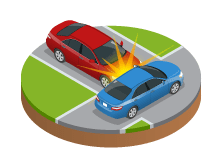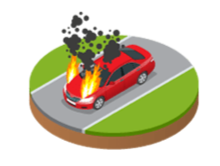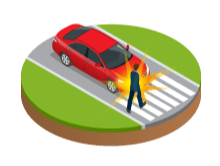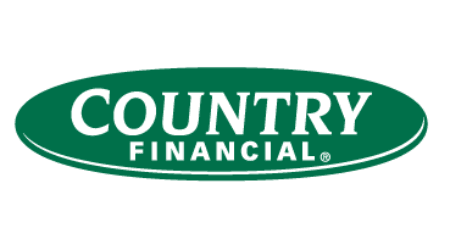Get the cheapest quotes for your car
Compare providers in your area.
Your information is secure
Compare providers in your area.
Your information is secure
In Minnesota, expect to pay $971.66 per year or about $81 per month for car insurance on average, according to the National Association for Insurance Commissioners (NAIC). Minnesota drivers stand to pay 18% less than the national average for car insurance, which is $1,190 annually.
However, the NAIC averages both state minimum coverage policies alongside policies with more coverage added, such as comprehensive and collision. Because many outside factors like your driving record and exact car influence your rates, you could end up with a higher or lower rate than Minnesota’s average.

In no-fault states, each driver pays for their own injury-related expenses after an accident.
To legally drive in Minnesota, you need to carry liability coverage as well as uninsured or underinsured motorist coverage and personal injury protection. You’ll see the amount of liability coverage required written as 30/60/10. These are called coverage limits that tell you the maximum amount your insurance will pay if you cause a car accident.
Let’s break down what’s covered with this state minimum coverage.

At a bare minimum, drivers in Minnesota need 30/60 in bodily injury liability, which pays up to $30,000 if you injure one person and $60,000 total if you injure multiple people in the same accident. This coverage is a middle-of-the-road level compared to what other states require.
This coverage kicks in if you’re at fault in the accident and other drivers, passengers or pedestrians get injured. You want ample coverage to avoid paying out of pocket for costly medical expenses.

Minnesota requires a minimal $10,000 for property damage, which pays out for damage to someone else’s car or personal property like a smartphone, poles or fencing. This amount falls at the low end of state requirements. Think through whether this limit would cover most damage costs for common cars or surrounding property in your area.

Personal injury protection in Minnesota covers medical expenses for you and any passengers, regardless of who’s at fault in the accident. You can use this coverage before dipping in to your health insurance coverage, and it applies even if you’re riding in someone else’s car.
This amount of PIP coverage is one of the highest state requirements across US. It covers an ambulance, hospitalization, surgery, dental work, therapy and rehabilitation.
You also can get 85% of lost wages paid up to $500 per week, along with up to $200 per week for housekeeping and other services if you’re limited by injuries. Last, PIP offers up to $5,000 to loved ones for funeral expenses.

About 20 states require uninsured or underinsured motorist coverage to protect you against drivers that don’t keep adequate insurance coverage, and Minnesota is one of those. This coverage pays for your or your passenger’s medical expenses if you get hit by an underinsured driver. It also kicks in for hit-and-run accidents.
You’ll get up to $25,000 for injuries to one person and $50,000 if multiple people are injured in the accident by the underinsured driver.
Even though Minnesota’s minimums reflect what many other states require, it may not give you the protection you need against more serious car accidents. Think about upping your limits for bodily injury liability, property damage liability and uninsured or underinsured motorist coverage. In a pinch, balance the cost of extra coverage with what you can fit in your budget.
Minnesota is a no-fault state, which means that you pay for your own medical bills, lost income and other injury expenses after an accident, no matter who’s at fault. File a claim under your personal injury protection for these expenses.
However, the state’s no-fault laws don’t apply to property damage like car repairs, according to the legal website Nolo. Minnesota considers whether drivers are partially at fault under a modified comparative fault law. Under this law, both drivers are assigned a percentage of fault. Drivers who are less than 50% at fault can get paid for damage caused by other drivers.
For example, if you’re 80% responsible for an accident, your insurance will pay 80% of the other driver’s damages. However, since you’re over 50% at fault, the other driver isn’t required to pay for your damages.
Allstate may be the best bet for young drivers under age 25. However, USAA and Progressive keep the lowest prices for other ages in our sample.
| Age | Allstate | Progressive | Geico | USAA |
|---|---|---|---|---|
| 16-24 | $156.60 | $197.20 | $197.31 | $207.60 |
| 25-34 | $144.53 | $127.12 | $130.22 | $124.74 |
| 35-44 | $155.68 | $112.91 | $139.35 | $102.83 |
| 45-54 | $111.82 | $102.52 | $128.82 | – |
In Minnesota, women can pay as much as $21 more per month than men, depending on the company. Men may find the cheapest quote from Progressive, while women may want a quote from USAA if you qualify.
| Company | Allstate | Progressive | Geico | USAA |
|---|---|---|---|---|
| Men | $141.57 | $118.10 | $147.64 | $138.48 |
| Women | $153.94 | $139.20 | $145.70 | $123.64 |
Progressive comes the closest to Minnesota’s average insurance cost, according to cost information from Savvy. To get the best deal for your driving needs, you’ll want to get quotes from a variety of companies.
| Company | Allstate | Progressive | Geico | USAA |
|---|---|---|---|---|
| Rate | $147.76 | $126.54 | $146.76 | $132.55 |
You won’t be lacking for car insurance choices in Minnesota — you’ll find both major and local brands to fit your preference. To cut through the noise, we bring you our top recommendations as a solid starting point.
We vetted these companies for coverage, discounts and perks like their online experience. We also checked ratings from J.D. Power, Better Business Bureau, AM Best and the National Association of Insurance Commissioners.
Progressive
Finder score
You also get options to cover custom equipment installed on your car, gap or rideshare coverage. Plus, Progressive doesn't disappoint with its long list of discounts, especially for safe drivers.
| Telematics | Snapshot |
|---|---|
| Gap insurance | Loan/lease coverage |
| Telematics | Snapshot |
|---|---|
| Gap insurance | Loan/lease coverage |
American Family
Finder score
American Family also gets solid customer ratings from organizations like J.D. Power, the BBB and the National Association of Insurance Commissioners (NAIC).

Country Financial
Finder score
The company also caters to families with teen drivers, offering significant savings if your young driver has good grades and takes a defensive driving course.
Nationwide
Finder score
According to Nationwide, you could save $40 per month over a traditional policy if you drive 500 miles a month. It's also an experienced brand in the industry, backed by an A+ financial rating from AM Best
| Telematics | Yes |
|---|---|
| Gap insurance | Yes |
| Telematics | Yes |
|---|---|
| Gap insurance | Yes |
Factors are characteristics specific to you that car insurance companies use to set how much you’ll pay for car insurance. The less risky each of your factors is the less you pay, the riskier you are the more you’ll pay. We’ll break down Minnesotan’s rating factors to keep in mind.
| Factor | How it affects your rates |
|---|---|
Age | How old you are is a top factor in determining your car insurance rates. With each passing year, you earn more experience on the road. More experience can equal cheaper rates. Teen drivers pay the most, but rates begin to level off around your 20’s with drivers over 50 paying the least. |
Gender | Minnesota takes gender into account when determining your rates. Our analysis of Quadrant data found that men under 18 pay 17% more for car insurance compared to women of the same age. But, between 31 and 45, women see rates 5% higher than men. After 45, rates differ between men and women by only 1%, with women on the higher end. |
Location | Where you live affects your rates, including where you park your car. High theft rates, high traffic and a high number of uninsured drivers could mean higher rates. Minnesota vehicle theft rates stand at 250 vehicle thefts per 100,000 inhabitants, according to the FBI’s most recent report on vehicle theft rates. That’s above the national average of 246 vehicle thefts per 100,000 inhabitants. As for uninsured drivers, 9.9% of Minnesotans on the road are uninsured. That’s less than average for the percent of uninsured drivers in a state according to Insurance Information Institute, with the national average standing at 12.6%. |
Driving Record | The better your driving record, the lower your premium. If you’re in an at-fault accident you could see rates increases from 20% to 50%. And DUI’s in Minnesota can increase your rate by around 37%. These types of violations typically stay on your record for about three years. |
Vehicle and mileage | Your car’s make, model and trim directly affect how much you’ll pay for car insurance. Things like its cost, safety ratings, the likelihood of theft and sportiness all help insurers determine its cost to insure. Safer and cheaper vehicles score the lowest rates, with luxury vehicles with higher repair costs resulting in higher premiums. And, the more you’re on the road, the more at-risk you are to get in an accident, which means higher premiums. However, according to the Bureau of Transportation, Minnesotans drive an average of 53 miles per day, that’s well above the average across the US of 36.1 miles per day. |
Credit score | Your credit score is included in your credit-based insurance score which insurers use to help calculate rates. According to the Insurance Information Institute, there is a strong correlation between your insurance score and claims filings. A good credit-based insurance score could mean lower rates. Minnesota drivers have protections under state laws that regulate the use of your credit history when issuing car insurance policies. Credit score can’t be the only factor used to determine your rates. |
Coverage | The more coverage you get and the higher limits you choose, the more protection you’ll have and the more you’ll pay in monthly premiums. And, if you opt for full coverage car insurance that includes comprehensive and collision, the amount of your deductible weighs into your costs too, higher deductibles mean lower monthly premiums. |
The purpose of your car insurance is to help you recover financially after a car accident. While Minnesota’s required coverage is a solid starting point, you need extra protection to cover different kinds of accident damage. Coverage you may need:
While Minnesota requires limits of 30/60/10 for liability coverage, think about upping those limits on your policy. You need higher protection than the state-required liability in most cases, especially if another driver takes you to court. Go over how much liability coverage makes sense for you with your insurance agent.
Anytime that you’re on the road, there’s a chance that you could cause a car accident. In at-fault accidents, your collision coverage pays for your car’s damage — if you bought this optional coverage first. Keep in mind that liability coverage pays for someone else’s property damage, not your own.
Consider collision coverage if . . .
Since car theft happens slightly more than average in Minnesota, consider adding comprehensive coverage. This coverage kicks in for noncollision incidents, including theft, vandalism, severe weather or falling tree branches.
Consider this coverage if . . .
If you finance your car, you might need gap insurance to pay off your car loan if your car gets totaled.
For a totaled car, your insurance company pays for your car’s market value minus depreciation. However, the insurance check may not be enough to pay off your loan. Gap insurance can kick in to pay off the rest.
Consider this coverage if . . .
Minnesotans drive much more than average. If you fall in this same group, you may want roadside assistance in case your car breaks down. With this coverage, you get a dedicated customer service number — no need to find towing or other services on your own.
Consider this coverage if . . .
See the top insurers by market share nationally that serve in Minnesota, according to S&P Global. To help you make the right decision for you, we list each company’s ratings from top rating agencies, including:
| Provider | BBB Rating | JD Power Rating | NAIC complaint ratio | National market share % | Finder score | Go to site |
|---|---|---|---|---|---|---|
State Farm | A+ | 847/1000 | 1.93 | 16.2 | ★★★★★ 4/5 | |
Geico | A+ | 832/1000 | 1.42 | 13.6 | ★★★★★ 4/5 | |
Progressive | A+ | 830/1000 | 1.05 | 13.3 | ★★★★★ 4/5 | Get Quotes |
Allstate | A+ | 827/1000 | 2.71 | 10.4 | ★★★★★ 4/5 | |
USAA | A+ | 884/1000 | 1.9 | 6.3 | ★★★★★ 4/5 | |
Farmers | A- | 820/1000 | 1.64 | 4.9 | ★★★★★ 4/5 | |
Liberty Mutual | A+ | 827/1000 | 2.2 | 4.7 | ★★★★★ 4/5 | Get Quotes |
Nationwide | A+ | 814/1000 | 2.08 | 2.3 | ★★★★★ 4/5 | |
American Family | A+ | 815/1000 | 1.35 | 2.1 | ★★★★★ 4/5 | |
Travelers | A+ | 820/1000 | 3.28 | 2 | ★★★★★ 4/5 |
| Company | Average annual rate | Learn more |
|---|---|---|
| North Star | $280 | |
| AAA | $328 | Read review |
| Western National | $344 | |
| Country Financial | $467 | |
| State Farm | $588 | |
| Metromile | $611 | |
| USAA | $756 | Read review |
| Allstate | $768 | Read review |
| Auto-Owners | $856 | |
| Geico | $936 | Read review |
Of Minnesota’s largest cities, Anoka has the cheapest rates and Andover has the most expensive car insurance rates. Andover drivers could face rates 4 times more than Anoka drivers.
| Company | Annual car insurance rate |
|---|---|
| Allstate | $2396 |
| American Family | $1270 |
| Metromile | $1375 |
| AAA | $1298 |
| Geico | $2166 |
| Company | Annual car insurance rate |
|---|---|
| Allstate | $2154 |
| American Family | $1128 |
| Metromile | $1275 |
| AAA | $1315 |
| Geico | $2213 |
| Company | Annual car insurance rate |
|---|---|
| Allstate | $2442 |
| American Family | $1131 |
| Metromile | $1425 |
| AAA | $1354 |
| Geico | $2121 |
| Company | Annual car insurance rate |
|---|---|
| Allstate | $2594 |
| American Family | $1267 |
| Metromile | $1394 |
| AAA | $1283 |
| Geico | $2291 |
| Company | Annual car insurance rate |
|---|---|
| Allstate | $1029 |
| American Family | $789 |
| Metromile | $909 |
| AAA | $539 |
| Geico | $952 |
You might need an SR-22 in Minnesota if you’ve gotten a DUI, lost your license or have too many violation points on your driving record. SR-22 tells the state you have the minimum coverage required to get back behind the wheel.
As of August 1, 2019, Minnesota has cracked down on cellphone use and slow drivers in the left lane. Drivers going below the speed limit in the left lane could face a $125 fine. With the hands-free driving law, drivers can only use touch-free or bluetooth devices while driving, with a fine of $275 for breaking the law.
Exploring the best of Minnesota’s attractions might be fun, but it’s sure to involve a lot of driving. Having the most adequate level of insurance coverage for your needs can provide peace of mind while you’re out on the road.
Get the best price on your car insurance by shopping around for the coverage — and discounts — that are right for you. To learn more about these topics, from rules and regulations to finding the best rates and coverage options, visit our comprehensive guide on car insurance.
APY stands for “annual percentage yield” and factors in compound interest. See why the difference between APY and interest matters so much.
Interest-bearing accounts passively grow your money. Compare common types of accounts that earn interest and find the best one for you.
Try to keep enough money in your checking account to cover monthly expenses, plus a small cushion. Read more tips here.
The Chime Credit Builder Card can help you build credit without charging interest and doesn’t require a deposit or monthly fee.
Explore cash advance apps like Ualett, perfect for gig workers looking for quick funding, budgeting support and flexible borrowing options.
A review of CashUSA, a loan connection service that may match you with lenders offering loans up to $10,000.
Explore different ways you could earn money playing games with GPT apps, Twitch streaming, esports competitions, and trading cards.
Compare highly rated and legit survey sites for your next side hustle, how to maximize your survey earnings, and how to avoid scams.
Learn how to become user tester, how much you can earn, top platforms for user testing, and how to avoid scams.
Learn how to earn money through trusted online surveys, including top platforms, practical tips, and some red flags to watch out for.